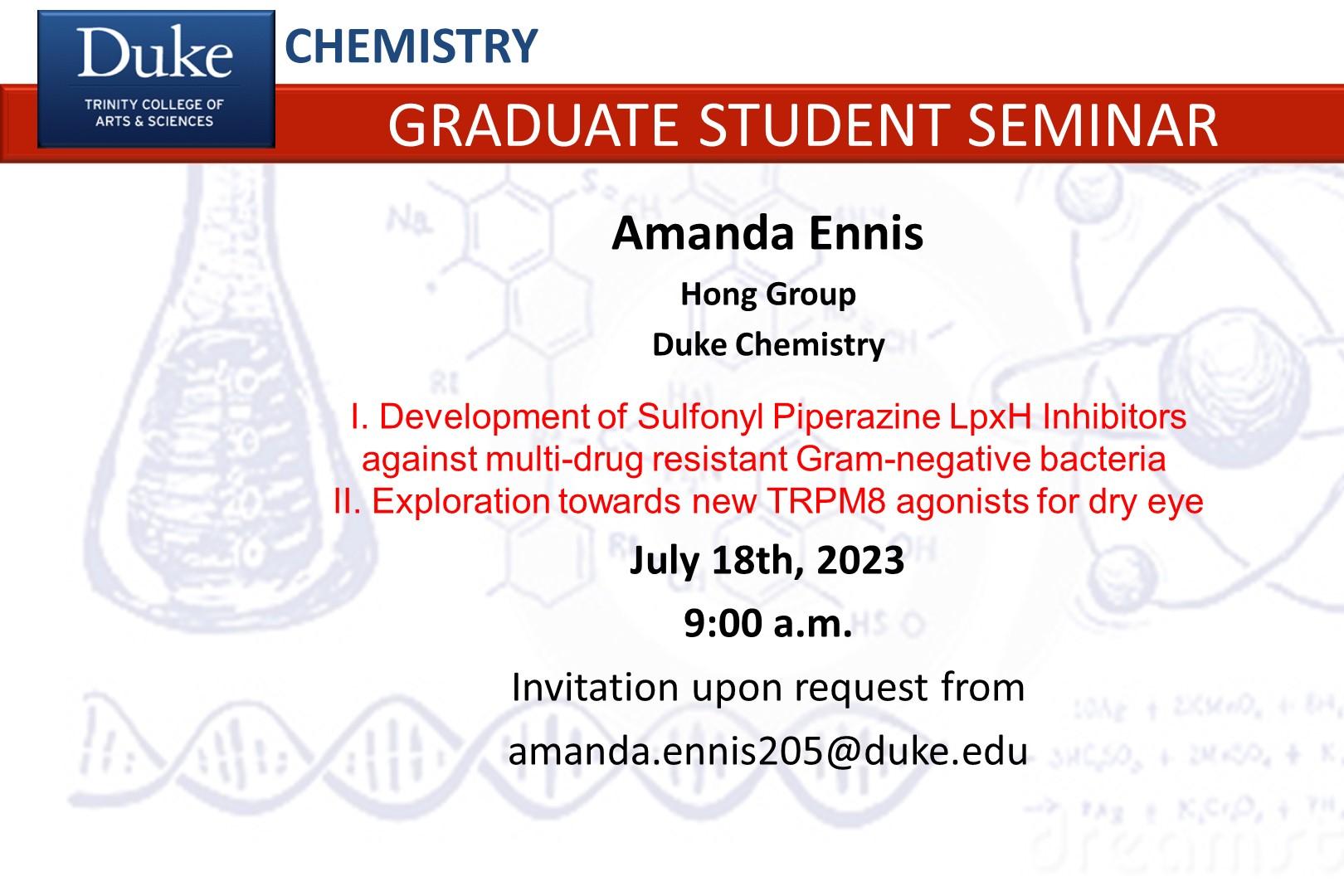
Speaker:
Amanda Ennis, Ph.D. Candidate; Jiyong Hong, Ph.D.,Advisor
The discovery of new drug scaffolds is a time-consuming and costly process. Computer-aided drug discovery has become a powerful tool to reduce these costs as it envelops a wide range of computational methods that can be used to identify or optimize lead compounds for various drug targets. Here these methods will be utilized in the development of both new LpxH inhibitors and TRPM8 agonists. The emergence of widespread antibiotic resistance among Gram-negative pathogens has led to an urgent need for a new class of antibiotics. Lipid A is a critical component of lipopolysaccharides that prevents penetration of the bacterial membrane by external detergents and antibiotics. The biosynthesis of lipid A occurs through the Raetz pathway via 9 distinct enzymes. The dual mechanism of cell killing due to the inhibition of the fourth enzyme, LpxH, makes it an attractive target for novel antibiotics. We have synthesized and evaluated a series of sulfonyl piperazine LpxH inhibitors which has allowed for the establishment of a comprehensive structure-activity relationship of this class of compounds.We also obtained the first crystal structure of Klebsiella pneumoniae LpxH in complex with a sulfonyl piperazine LpxH inhibitor which illuminated how this class of inhibitors fits into the binding pocket of LpxH and guided the design of inhibitors with increased potency. Our findings will be instrumental in the discovery of new antibiotics against multidrug-resistant Gram-negative pathogens. As the use of technology continues to increase,so does the incidence of dry eye disease. Modulation of the TRP channel TRPM8 has been implicated as a route for the treatment of dry eye disease as TRPM8 plays a critical role in basal tear production, eye blinking, and is the sensor for eye dryness. Current well-known modulators of TRPM8 are not suitable for ocular use as they have undesirable physical properties and off-target effects on other TRP channels. The recently discovered small molecule cryosim-3 which was identified as a TRPM8 specific agonist provides a good starting point for the development of a new agonist suitable for ocular studies. Using cryo-electron microscopy, molecular docking, and virtual screening, we have begun to understand the different binding orientations of various TRPM8 ligands. This information has aided us in probing new chemical space for the identification of a TRPM8 agonist with improved potency, selectivity, and physical properties over existing agonists.